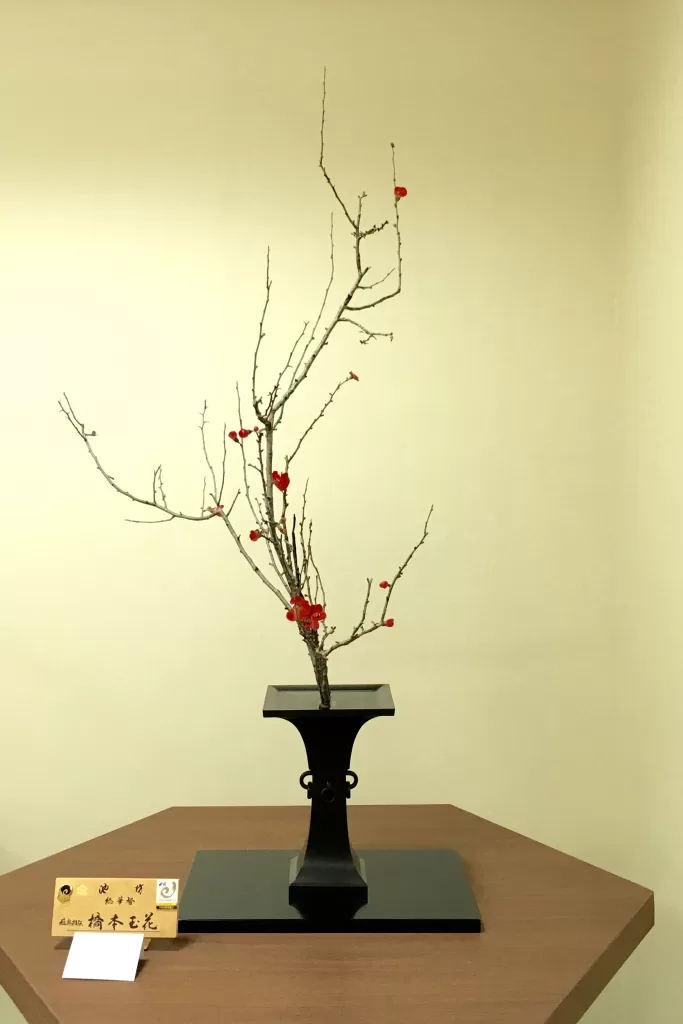Ikebana Fuses Art and Symbolism in Autumn Tanabata Exhibition

The Japanese art of flower arranging, Ikebana, a fine tradition inherent in Japanese culture since the Heian period (784 – 1185 AD), is set to take center stage at this year’s Autumn Tanabana Exhibition. The coordination of aesthetics with symbolic meaning, a key feature of Ikebana, closely differentiates it from Western floral arrangements.
Navigating its history back to Buddhist expressions and consequently formed rules, Ikebana emerged during the 6th century as a formalized offering to Buddha. It was founded by Buddhist missionaries, spearheaded by Ono no Imoko, a former envoy turned monk.
The Unfolding Beauty of Ikebana
This culturally unique Japanese art form has evolved over centuries into several distinctive styles, each encompassing its character and intention. These exquisite designs gradually found their way into private homes, gracing pre-built Takocoma alcoves with their alluring displays.
Ikebana goes beyond a mere appreciation of floral beauty; it is an act of reverence in Buddhism. The arrangements transmit symbolic messages shaped purposely to evoke emotions, mark important life events or signal significant days of the year.
The almost minimalist patterns use specific positions for branches that act as metaphoric or symbolic signals. Typically arranging branches to represent celestial entities such as the earth moon, and sun; some schools also utilize the rule of three, symbolizing heavens, earth, and human spirit.
Embodied Symbolism and Meaning in Ikebana
The embedded symbolism interspersed in Ikebana fluctuates between Japanese subcultures and traditions. Dominantly minimalistic presentations depict unique meanings hinged on its color, appearance, or growth pattern.
Central to Japan’s symbolism is Cherry Blossom signifying acceptance of imperfections and compassion while Lotus fosters harmony and heightened spiritual awareness. Peony brings in confidence and prosperity upon spectators.
Striking balance with seasons remains central to any Ikebana arrangement supported by Bamboo grass which is used perennially. Other usual features include Japanese plum branches for New Year’s arrangements, Japanese Iris for summer while Chrysanthemum gets prominence during autumn.

The Annual Autumn Tanabada Extravaganza
Japan’s largest and oldest exhibition dating back to Edo era(1603-1868), the Autumn Tanabata Exhibition hosted every November by Ikenobo School and Ikenobo Society of Floral Art encapsulates the appeal of traditional and contemporary Japanese flower arrangements extensively. It’s one of the most beautiful Kyoto events in November.
Participating artists specialize in three forms – rikka, shōka and freestyle – and ensure an awe-inspiring rendition decorating both venues; Ikenobo headquarters at Rokkaku-dō temple & Takashimaya department store. Admission stands at merely 1,000 yen (or free for children up through high school age or visitors sporting Kimono).
Both seasoned instructors along with the forty-fifth generation Headmaster Ikenobo Sen’ei & Headmaster Designate Ikenobo Senkō create grandiose presentations on display throughout.
Looking to immerse yourself in the beauty of traditional Japanese culture? Experience the enchanting Kyokusui no En festival at Kitano Tenmangū Shrine in Kyoto. Poets dressed in plush Heian period-style robes gather by a picturesque garden stream, accompanied by captivating shirabyōshi dance performances and sung poetry.